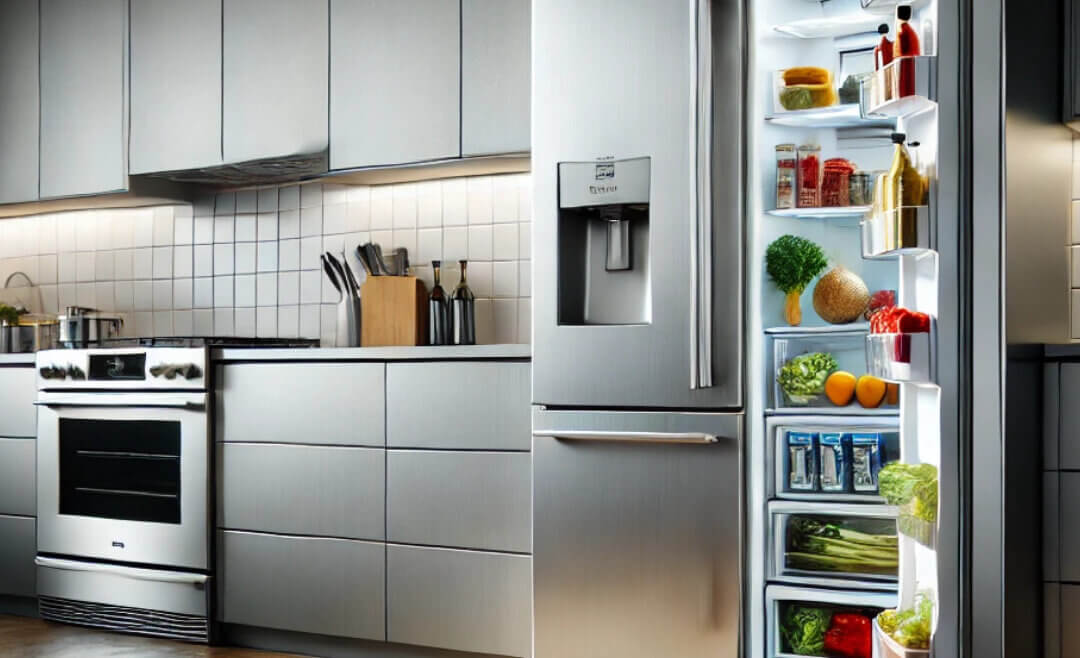Table of Contents
- Preparation and Planning
- Unboxing and Inspecting Your Refrigerator
- Connecting the Water Line
- Positioning and Leveling the Refrigerator
- Connecting the Power
- Final Adjustments and Inspection
- Maintenance Tips for Long-Term Performance
- Troubleshooting Common Issues
Preparation and Planning
Before starting the installation process, it’s essential to prepare adequately. Here’s what you need to do:
- Measure Your Space: Measure the height, width, and depth of the area where the refrigerator will be placed. Ensure there’s sufficient clearance on all sides to allow for proper ventilation, typically at least an inch on the sides and back. Check the doorways, hallways, and any obstacles along the delivery path to ensure the refrigerator can be safely transported into your kitchen.
- Choose the Right Location: Your refrigerator should be placed away from heat sources such as ovens or direct sunlight, as excessive heat can reduce its efficiency. Ensure proximity to a power outlet and, if applicable, a water line for models with ice or water dispensers.
Unboxing and Inspecting Your Refrigerator
Once you’ve prepared the space, it’s time to unbox your new refrigerator:
- Unbox Carefully: Remove all packaging materials, including the protective film, foam inserts, and tape. Check for any signs of damage that may have occurred during delivery. Scratches, dents, or any internal issues should be reported immediately to the retailer.
- Let the Refrigerator Sit Upright: After moving the fridge to its designated spot, allow it to sit upright for at least 4-6 hours before plugging it in. This waiting period allows the compressor oil to settle, ensuring smooth operation.
Connecting the Water Line (If Applicable)
If your refrigerator comes with an ice maker or water dispenser, connecting the water line is the next step:
- Turn Off the Water Supply: Locate the nearest cold water supply line and turn it off before beginning any installation work.
- Connect the Water Line: Attach one end of the water line to the refrigerator’s water inlet valve. Secure the other end to your home’s water supply valve, ensuring all connections are tight to prevent leaks. Turn the water supply back on and check for any leaks at the connection points.
Positioning and Leveling the Refrigerator
Proper positioning and leveling are key to ensuring your refrigerator operates efficiently:
- Move the Refrigerator into Place: With the help of another person, gently slide the refrigerator into its designated spot. Use a dolly if necessary to prevent damage to your flooring.
- Level the Refrigerator: Adjust the front leveling legs to ensure the refrigerator is perfectly level. A level fridge prevents the doors from hanging open and ensures the cooling system operates correctly. Use a carpenter’s level to check both the side-to-side and front-to-back balance.
Connecting the Power
With the refrigerator in place and leveled, it’s time to power it up:
- Plug In the Refrigerator: Plug the refrigerator into the power outlet. Ensure the cord is not pinched or trapped under the appliance. It’s advisable to use a surge protector to safeguard your refrigerator against power surges.
- Set the Temperature: Once plugged in, set the refrigerator and freezer compartments to the recommended temperatures. Typically, the fridge should be set to 37°F (3°C) and the freezer to 0°F (-18°C). Allow the refrigerator to cool for at least 24 hours before stocking it with food to ensure it reaches the desired temperature.
Final Adjustments and Inspection
Before you start using your new refrigerator, a few final checks are necessary:
- Check Door Seals: Ensure the doors close tightly and the seals are in good condition. Proper sealing is crucial for energy efficiency and keeping your food fresh.
- Inspect the Water Dispenser and Ice Maker: If your model includes these features, test the water dispenser and ice maker to confirm they’re working correctly. It may take a few hours for the ice maker to start producing ice.
- Review the User Manual: Finally, review the user manual for any specific instructions or tips provided by the manufacturer. This is particularly important for advanced models with digital controls or smart features.
Maintenance Tips for Long-Term Performance
To ensure your refrigerator remains in top condition for years to come, regular maintenance is essential:
- Clean the Coils: Every six months, clean the condenser coils located at the back or bottom of the refrigerator. Dusty coils reduce efficiency and can cause the refrigerator to overheat.
- Change the Water Filter: Replace the water filter every 6 months or as recommended by the manufacturer to ensure clean water and ice.
- Check the Door Seals: Inspect the door seals regularly to ensure they’re not cracked or damaged. Replace them if necessary to maintain energy efficiency.
- Monitor Temperature Settings: Periodically check the internal temperature of your refrigerator and freezer to ensure they’re at optimal levels.
Troubleshooting Common Issues
Even with proper installation, you may encounter some common issues. Here are quick fixes for some of them:
- Refrigerator Not Cooling: Check the temperature settings and ensure the vents inside the fridge aren’t blocked by food items.
- Water Leaks: Verify that the water line connections are tight and inspect the drain pan for cracks.
- Strange Noises: Ensure the refrigerator is level and that it’s not in contact with any walls or cabinets.
Conclusion
Installing a refrigerator doesn’t have to be a daunting task. By following these steps, you can ensure that your new appliance is set up correctly for optimal performance.
However, if you’re unsure about any part of the installation or run into issues, don’t hesitate to contact King Appliance Repair Company.
Our team of professionals is ready to assist you with expert advice and repair services to keep your kitchen running smoothly.
Remember, proper installation is the first step toward a long-lasting, efficient refrigerator.
Taking the time to do it right will pay off in the form of energy savings, better food preservation, and fewer maintenance issues down the road.
If you need assistance, reach out to us today!
For more tips on appliance care and maintenance, be sure to explore our blog or contact King Appliance Repair Company for all your repair needs.


